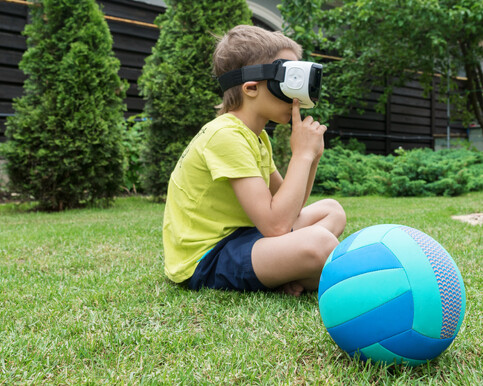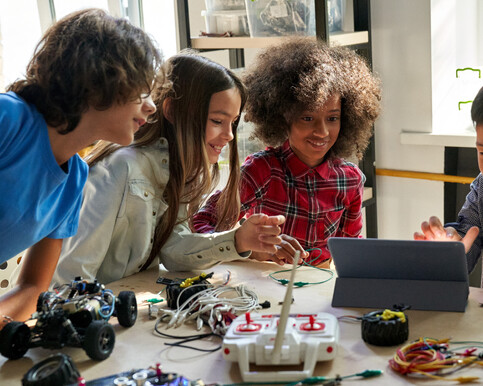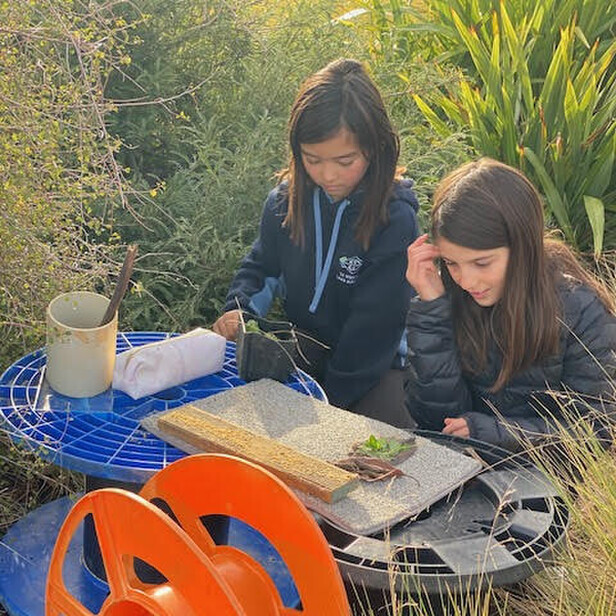Bridge the Gap Between Theory & Classroom Practice
Balancing Curriculum Demands and the Power of Play
The Challenge: Making Time For Play While Meeting Curriculum Demands
Teachers know the power of learning through play, but making it visible, purposeful, and connected to curriculum goals can feel impossible—especially in busy, diverse classrooms.
Planning takes too long
Documenting play feels overwhelming
Curriculum pressure pulls focus from child-led learning
You’re constantly balancing expectations while trying to protect the value of play.
Introducing the Play-Based Learning Observation Tool (P-BLOT) Developed by Teachers for Teachers
That’s where Longworth Education can help—providing the confidence, clarity, and tools you need to plan, document, and strengthen learning through play.
"The P-BLOT is a most useful tool in helping teachers truly understand where to next with their classroom practice, resourcing and own way of being as a teacher to enable some important foundations, especially with regards to play. However, it is most definitely not just about play and on that basis we use it as ‘the’ tool to support teachers with their own growth (PLGs). It is not threatening and helps with self-identification of next steps in practice.
It has really helped our senior school with defining their practices in relation to play to help know what PBL can look like in the senior school."
Andrew King, Principal, Oropi School, Tauranga
President Rural Schools Association
Photo by: Fiona Violich Photography
How the P-BLOT Supports Teacher
Growth and Practice
The P-BLOT isn’t just a tool—it’s part of a structured professional learning process designed to strengthen play pedagogy in real classrooms.

Build teacher confidence
Raise the quality and frequency of learning through play
Strengthen practice sustainably
The P-BLOT is just the starting point. Our team supports your journey with evidence-informed professional learning designed by experienced teachers, for teachers.
What Schools Are Saying
"The P-BLOT is specific, targeted, concise. It identifies what to look for with very clear indicators, it supports leaders in guiding teacher to the next step and how to support the process, it also identifies unclear indicators, so it ensures everyone knows what learning through play looks like and doesn’t look like! It guides leaders in making very deliberate observational notes when in the teacher’s learning spaces and narrows the focus to a particular area which enables a very clear direction for feedback and feed forward. The leadership team builds a very coherent and shared understanding of what we all expect our play environments and our teachers’ roles within that to be. Nobody is going off down their own pathway of what good practice might be or not be. It identifies what further research, resources, or new learning might be needed to continue to further deepen play practice and teacher professional learning."
Jodie Howard, Tumuaki/Principal
Te Kura o Take Kārara, Wānaka, New Zealand
Professional Learning That Builds Confidence and Capability in Learning Through Play
Our professional learning offer is designed to strengthen teacher practice where it matters most—in the classroom. Using observation and coaching tools like the P-BLOT, we create tailored pathways that meet your team’s needs and context.
Whether you’re just starting or ready to refine your approach, we support teachers to deliver high-quality, sustainable learning through play.
Tune Into Our Latest Conversations on Play
Explore inspiring conversations with educators, researchers, and thought leaders through our Play Conversations podcast, or dive into practical ideas and classroom walkthroughs on our YouTube channel.
Whether you're on your commute or planning your next learning environment, we’ve got you covered with rich, practical content to support your journey.
Our Core Professional Learning Pathways:
Practice-Based Coaching
Work alongside a Longworth coach to deepen play pedagogy. Observe practice, reflect, and refine through targeted, evidence-informed cycles of support.
Strengths & Needs Assessment
Identify where your team is strong and where support is needed. Use our structured assessment tools to shape the pathway forward.
Customised Professional Learning
Build knowledge and skills in key areas like:
Planning for child-led learning
Balancing curriculum demands
Observing and documenting play meaningfully
Supporting wellbeing and sustainable practice
Ongoing Mentoring and Support
Sustain change over time with expert mentoring designed by teachers who understand the realities of busy, diverse classrooms.
Imagine a Classroom Where Play is Purposeful, Visible, and Valued
With the right support, teachers can confidently embed learning through play alongside structured, explicit teaching —knowing it’s connected to curriculum goals, visible to leaders and families, and deeply meaningful for children.
Children’s play is rich, joyful, and developmentally powerful
Teachers plan and reflect with confidence, not overwhelm
Observations show real learning happening through play
Teams share a strong, shared understanding of quality play pedagogy
School leaders see evidence of impact—and teachers feel valued in their work
This is what’s possible when teachers have the tools, coaching, and professional learning they deserve.
Ready to Strengthen Playful Learning in Your School?
We’re here to support you. Whether you’re exploring where to start or ready to dive into professional learning, our team can guide you through the next steps.
Discover how the P-BLOT and Longworth Education help teachers embed high-quality learning through play—confidently, sustainably, and with impact.
Tailored support designed by teachers, for teachers
We honour Te Tiriti o Waitangi and uphold its principles in our work. We recognise and respect the mana, knowledge, and enduring connection of tangata whenua to the land, and extend this respect to the Indigenous peoples of all nations in which we work.





